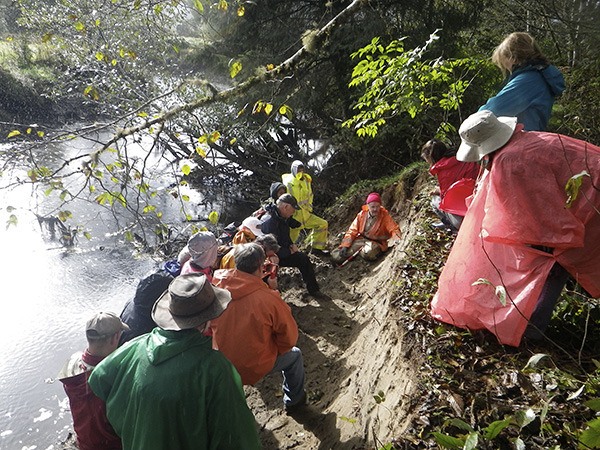Starting the search for local evidence of the tsunami that hit the West Coast in 1700, a caravan of mixed group teachers, including K-12, park/museum (information education) and emergency management educators, bumped along the muddy road to the Waatch River Prairie Estuary, Saturday, Oct 11.


